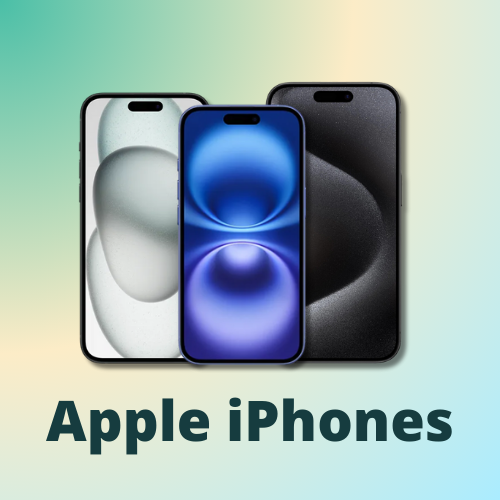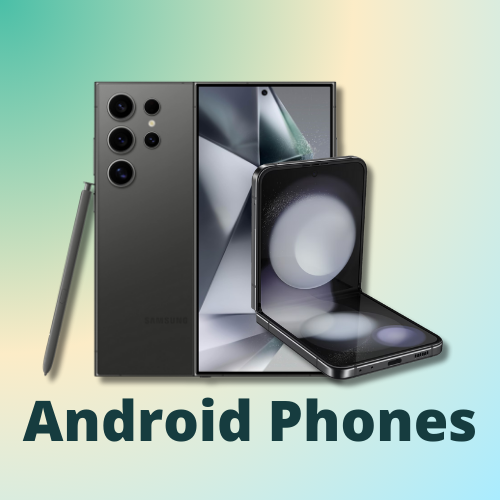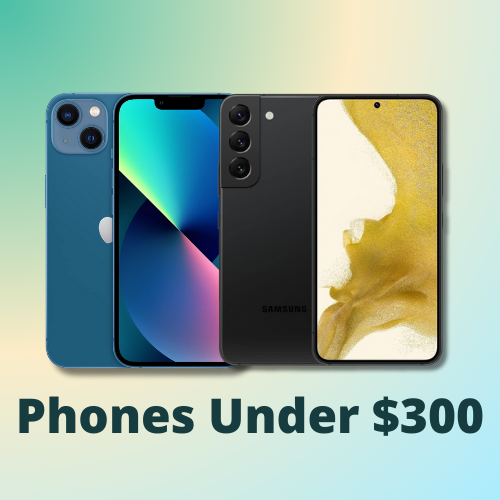Comparing the iPhone X and iPhone 11
In the world of smartphones, Apple has become synonymous with cutting-edge technology and sleek designs. With each new release, the tech giant manages to captivate consumers worldwide. Two of their most popular models, the iPhone X and iPhone 11, have taken the market by storm. In this article, we will delve into a comprehensive comparison of these two remarkable devices.
Understanding the Basics: iPhone X vs iPhone 11
Before we dive into the specifics, let's familiarize ourselves with the key features and specifications of both the iPhone X and iPhone 11.
When the iPhone X was released in 2017, it introduced the world to Apple's innovative edge-to-edge Super Retina display. This display, measuring 5.8 inches, captivated users with its vibrant colors and sharp resolution of 2436 x 1125 pixels. The iPhone X was not just a pretty face, though. Underneath its sleek exterior, the device housed Apple's powerful A11 Bionic chip, which ensured smooth and efficient performance. With a generous 3GB RAM, the iPhone X packed a punch in terms of processing capabilities, allowing users to seamlessly navigate through apps and multitask with ease.
Key Specifications of iPhone X
The iPhone X was truly a groundbreaking device in its time. Its edge-to-edge display revolutionized the way we interacted with our smartphones, providing an immersive visual experience like never before. With its OLED technology, the iPhone X delivered deep blacks and vibrant colors, making everything on the screen come to life. Whether you were watching a movie, playing a game, or simply browsing the web, the Super Retina display of the iPhone X ensured that every detail was crisp and clear.
Not only did the iPhone X excel in display quality, but it also boasted impressive performance capabilities. Powered by the A11 Bionic chip, the device offered lightning-fast processing speeds and efficient power management. This meant that you could run demanding apps and games without experiencing any lag or slowdown. The iPhone X's 3GB RAM further enhanced its multitasking capabilities, allowing you to seamlessly switch between apps and perform multiple tasks simultaneously.
Key Specifications of iPhone 11
In 2019, Apple launched the iPhone 11, the successor to the highly acclaimed iPhone X. Building upon the foundation laid by its predecessor, the iPhone 11 featured a larger 6.1-inch Liquid Retina display. This display, with its advanced LCD technology, offered stunning visuals and vibrant colors that truly brought content to life. Whether you were scrolling through social media, watching videos, or editing photos, the iPhone 11's display provided an immersive and enjoyable viewing experience.
Under the hood, the iPhone 11 was powered by Apple's A13 Bionic chip, which took performance to a whole new level. This chip was designed to handle even the most demanding tasks with ease, delivering faster app launches, smoother animations, and improved overall responsiveness. With its remarkable 4GB RAM, the iPhone 11 excelled in multitasking, allowing you to effortlessly switch between apps and perform resource-intensive tasks without any hiccups.
Additionally, the iPhone 11 introduced significant improvements in camera technology. With its dual-camera system, consisting of a 12-megapixel wide-angle lens and a 12-megapixel ultra-wide-angle lens, the device offered a versatile photography experience. Whether you wanted to capture breathtaking landscapes or take stunning portraits, the iPhone 11 had you covered. The device also introduced Night mode, which allowed users to capture impressive low-light photos with enhanced detail and reduced noise.
Another notable feature of the iPhone 11 was its impressive battery life. With its optimized hardware and software integration, the device offered all-day battery performance, ensuring that you could go about your day without constantly worrying about running out of power. Whether you were streaming videos, playing games, or using productivity apps, the iPhone 11 had the endurance to keep up with your needs.
Design and Display Comparison
When it comes to design, both the iPhone X and iPhone 11 exude elegance and sophistication. However, there are some notable differences that set them apart.
Aesthetics and Build: iPhone X vs iPhone 11
The iPhone X showcased a sleek and modern design, featuring a stainless-steel frame sandwiched between two glass panels. Its bezel-less display, coupled with the absence of a physical home button, gave the device a futuristic and minimalist look. The iPhone X's design was a significant departure from previous iPhone models, making it a standout in terms of aesthetics.
On the other hand, the iPhone 11 embodies a more playful approach with its vibrant color options and aluminum frame. Apple introduced a range of eye-catching colors for the iPhone 11, including purple, green, yellow, black, white, and red. This color variety allows users to express their personal style and adds a touch of fun to the overall design.
While both devices sport glass backs, the iPhone 11 is more durable, thanks to its improved water and dust resistance rating. This added durability provides users with peace of mind, knowing that their device can withstand accidental spills or exposure to dusty environments.
Screen Quality and Resolution Differences
While the iPhone X boasted impressive screen quality, the iPhone 11 stepped up the game. With its upgraded Liquid Retina display, the iPhone 11 offers better color accuracy and brightness levels compared to its predecessor. The Liquid Retina display technology ensures that images and videos appear vivid and lifelike, enhancing the overall viewing experience.
The True Tone technology, present in both devices, adjusts the display's color temperature based on the ambient lighting conditions for enhanced viewing experiences. This feature ensures that the screen's colors remain consistent and natural regardless of the lighting environment, reducing eye strain and providing a more comfortable viewing experience.
Although the iPhone X showcased a higher resolution, the average user would not notice a significant difference in pixel density between the two devices. Both the iPhone X and iPhone 11 offer sharp and clear visuals, making it difficult to discern any pixelation or jagged edges in everyday usage.
Overall, while the iPhone X set a new standard for design and display quality, the iPhone 11 builds upon its predecessor's strengths and introduces new features that enhance the user experience. Whether it's the sleek and futuristic design of the iPhone X or the playful and colorful options of the iPhone 11, both devices offer a visually appealing and immersive experience.
Performance and Speed Analysis
When it comes to performance, the iPhone X and iPhone 11 each have their strengths, thanks to their powerful internal components.
Let's dive deeper into the performance and speed of these two devices to see how they compare.
Processing Power: A Look at the Chips
Underneath their sleek exteriors, the iPhone X housed the A11 Bionic chip, while the iPhone 11 houses the A13 Bionic chip. The A11 Bionic, with its hexa-core CPU, proved to be a powerhouse in delivering swift and seamless performance.
With its neural engine and advanced machine learning capabilities, the A11 Bionic chip was able to handle complex tasks with ease. From running graphic-intensive games to handling augmented reality applications, the iPhone X showcased its processing prowess.
However, the A13 Bionic chip takes things up a notch with its improved performance and energy efficiency. Boasting a hexa-core CPU with 2 high-performance cores and 4 energy-efficient cores, the A13 chip ensures smooth multitasking and lightning-fast app launches on the iPhone 11.
Not only does the A13 Bionic chip deliver exceptional speed, but it also enhances the overall user experience. With its advanced image signal processor and machine learning algorithms, the iPhone 11's camera capabilities are taken to new heights, capturing stunning photos and videos with remarkable detail and clarity.
Battery Life and Charging Capabilities
Long battery life has always been a priority for smartphone users, and both the iPhone X and iPhone 11 deliver in this aspect.
The iPhone X featured a battery that could easily last a full day with moderate usage. Whether you were browsing the web, streaming videos, or playing games, the iPhone X had you covered.
However, the iPhone 11 shines with its improved battery efficiency, allowing users to squeeze out a few extra hours of usage. With its optimized software and hardware integration, the iPhone 11 intelligently manages power consumption, ensuring that you can go even longer without needing to recharge.
Additionally, the iPhone 11 supports faster charging, thanks to its compatibility with Apple's 18W power adapter. This means less time spent tethered to a charger and more time enjoying the device's impressive features.
Whether you're in a rush or simply want to top up your battery quickly, the iPhone 11's fast charging capabilities make it a convenient companion for those on the go.
In conclusion, both the iPhone X and iPhone 11 offer impressive performance and speed. While the iPhone X showcased its power with the A11 Bionic chip, the iPhone 11 takes it to the next level with the A13 Bionic chip. Additionally, the iPhone 11's improved battery efficiency and faster charging capabilities make it a compelling choice for users who value longevity and convenience.
Camera Capabilities: A Detailed Comparison
In recent years, smartphone cameras have become a deciding factor for many consumers. Apple has always set high standards in this department, and both the iPhone X and iPhone 11 are no exception.
When it comes to camera features, the iPhone X introduced a dual-camera system that revolutionized mobile photography. With a 12MP wide-angle lens and a 12MP telephoto lens, users were able to capture stunning photos with incredible detail. The optical zoom feature allowed for closer shots without compromising image quality, while the portrait mode and depth effects added a professional touch to every photo. The iPhone X also excelled in low-light conditions, thanks to its optical image stabilization and improved sensor technology. Whether it was a vibrant sunset or a cozy candlelit dinner, the iPhone X delivered exceptional results.
Not to be outdone, the iPhone 11 took the camera game to a whole new level. Building upon the success of its predecessor, the iPhone 11 featured a dual-camera system that included a 12MP wide-angle lens and a 12MP ultra-wide-angle lens. This expanded field of view allowed users to capture a wider perspective, making it perfect for landscape shots or group photos. The addition of Night mode was a game-changer, as it brought low-light photography to new heights. With Night mode, users could capture stunning images even in dimly lit environments, revealing details that were once hidden in the shadows. The iPhone 11 also introduced improved video recording capabilities, such as extended dynamic range and cinematic stabilization, making it a powerful tool for capturing memories in motion.
Both the iPhone X and iPhone 11 have their own unique strengths when it comes to camera capabilities. Whether you're a photography enthusiast or simply someone who loves capturing life's moments, these devices offer a range of features to help you take your photos and videos to the next level. From optical zoom and portrait mode to Night mode and extended dynamic range, Apple continues to push the boundaries of what is possible in smartphone photography.
Software and User Experience
While hardware plays a crucial role, a device's software and user experience are equally important. Let's take a closer look at how the iPhone X and iPhone 11 differ in this aspect.
Operating System and Interface Comparison
Both the iPhone X and iPhone 11 run on Apple's renowned iOS operating system. However, the iPhone 11 comes equipped with iOS 13, offering various improvements and additional features compared to the iPhone X's iOS 11. With iOS 13, users have access to features like dark mode, enhanced privacy options, and improved app performance. The user interface on the iPhone 11 also benefits from the larger display, providing a more immersive and user-friendly experience.
Additional Features and Capabilities
When it comes to additional features, the iPhone 11 takes the crown with its added capabilities. The device supports Gigabit-class LTE, providing faster download and upload speeds compared to the iPhone X. Additionally, the iPhone 11 introduced Face ID improvements, making facial recognition faster and more accurate. The device also showcases improved water and dust resistance, allowing users to capture memories worry-free in various environments.
In conclusion, the iPhone X and iPhone 11 are both exceptional devices that have left their mark in the smartphone industry. While the iPhone X boasts the timeless elegance of its design and impressive camera capabilities, the iPhone 11 takes performance and user experience to new heights. Whether you're an avid photographer, a multitasking enthusiast, or simply a technology enthusiast, both devices offer a remarkable smartphone experience. It ultimately comes down to your personal preferences and priorities when choosing between the iPhone X and iPhone 11.







